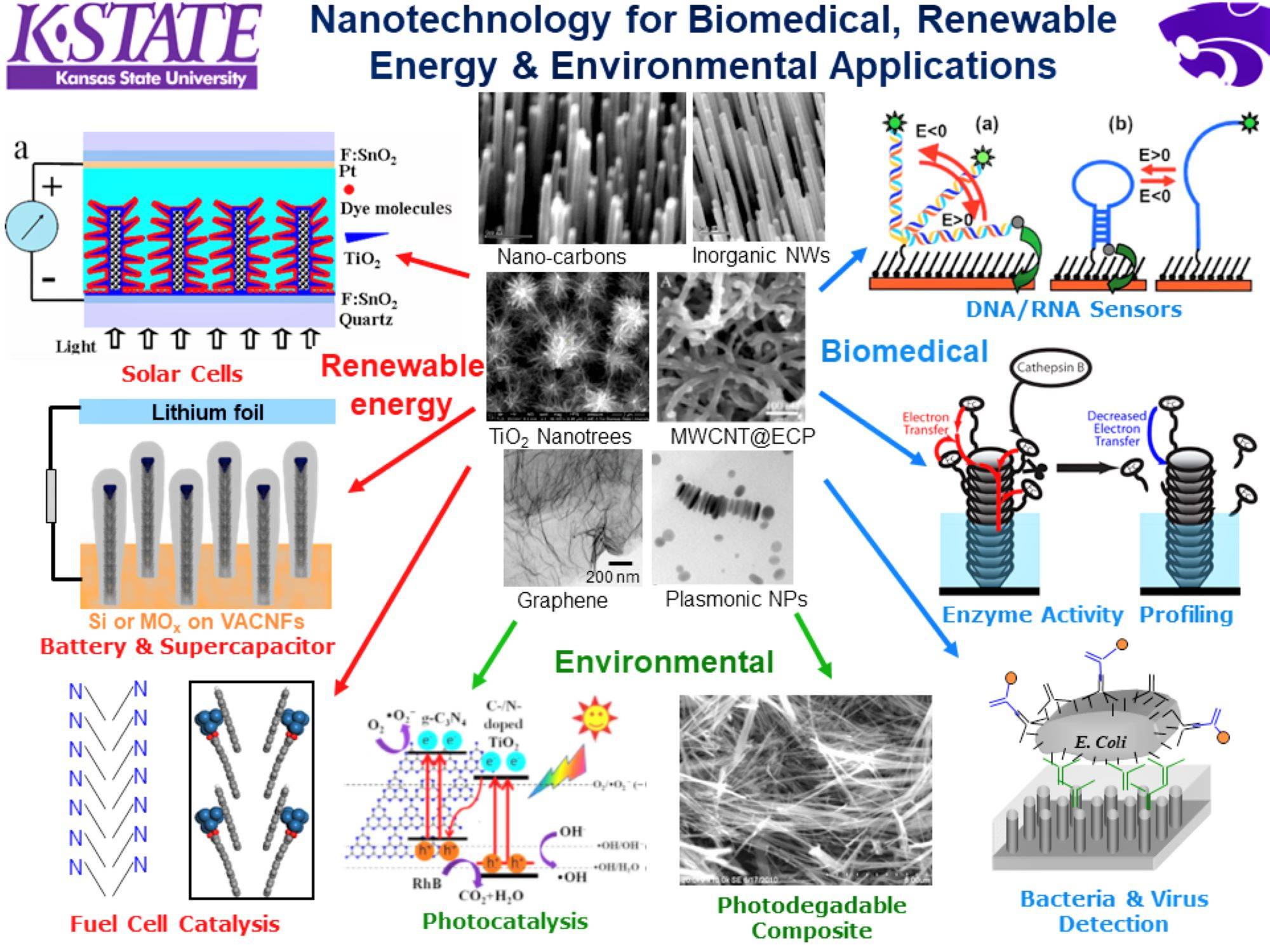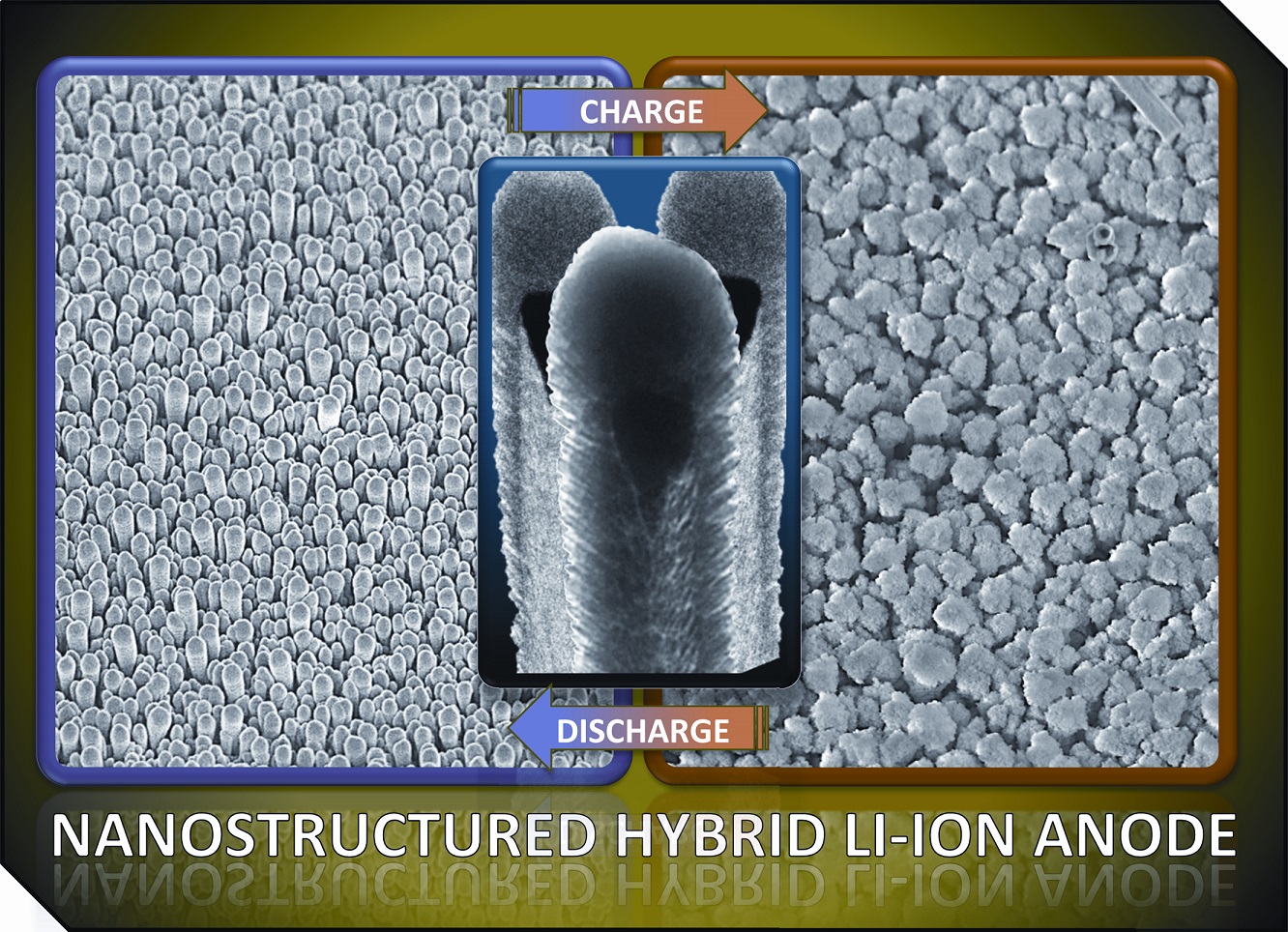Home
Research Overview
Research in the Li laboratory is in the interdisciplinary field of nanoscience and nanotechnology, with an emphasis on the development of novel applications of micro-/nano- devices in chemical/biochemical analysis, biomedicine, energy conversion and storage, environmental monitoring and protection, and electronics. Our foci are the fundamental understanding of new phenomena involved in nanomaterials growth/assembly, characterization, surface modification, and device fabrication/evaluation. The projects involve close collaboration with partners from academia, industry, and government labs. Current projects include: (a) Nanomaterials growth: mainly focused on high-aspect ratio nanofibers including carbon nanotubes (CNTs), carbon nanofibers (CNFs), semiconducting inorganic crystalline nanowires, and core-shell nanowires; (b) Biosensor development: mainly focused on embedded nanoelectrode arrays based on vertically aligned CNFs for electrochemical detection of proteases activity and nanoscale dielectrophoretic capture and detection of virus and bacteria; (c)Energy conversion and storage : mainly focused on developing a 3D architecture based on vertical core-shell nanowire arrays for dye-sensitized solar cells, lithium-ion battery, and supercapacitors.
Research Overview

Nanomaterials Growth
Our nanomaterials synthesis work is focused on preparing high-aspect ratio nanowires (NWs). A major effort is on exploring new methods to grow nanowires deterministically on solid substrates with controlled diameter, length, and orientation (particularly in free-standing vertical orientation) for device applications. The nanowire materials include carbon nanotubes (CNTs), carbon nanofibers (CNFs), semiconducting inorganic crystalline nanowires (s-NWs), and metallic nanowires (m-NWs). The methods include thermal chemical vapor deposition (CVD), plasma enhanced chemical vapor deposition (PECVD), and electrochemical deposition. Another effort is on large-quantity synthesis of NWs with hydrothermal method. NW materials such as ZnO, Bi2Te3, MnO2, etc. have been prepared for various applications.

Device Fabrication/Characterization
We employ conventional solid-state micro-/nano- fabrication techniques including lithography, CVD/PVD, plasma and wet chemical etching, sputtering, and chemical mechanical polishing. In addition, nonconventional methods such as soft-lithography, imprinting, templating, electrochemical etching/deposition, and chemical functionalization are investigated. Most fabrication processes employ a bottom-up method using massive arrays of vertically aligned CNTs and NWs on patterned substrates. The electronic, physical, and chemical properties and device performance are studied with electrochemistry, I-V measurements, optical spectroscopy, electron microscopy, and scanning probe microscopy. For biomaterials and biomedical devices, experiments involving molecular biochemistry, cell/tissue culture, and in-vivo animal experiments are carried in our lab or through collaborations.


Fig. 4 Nanostructured Li-ion battery electrodes
